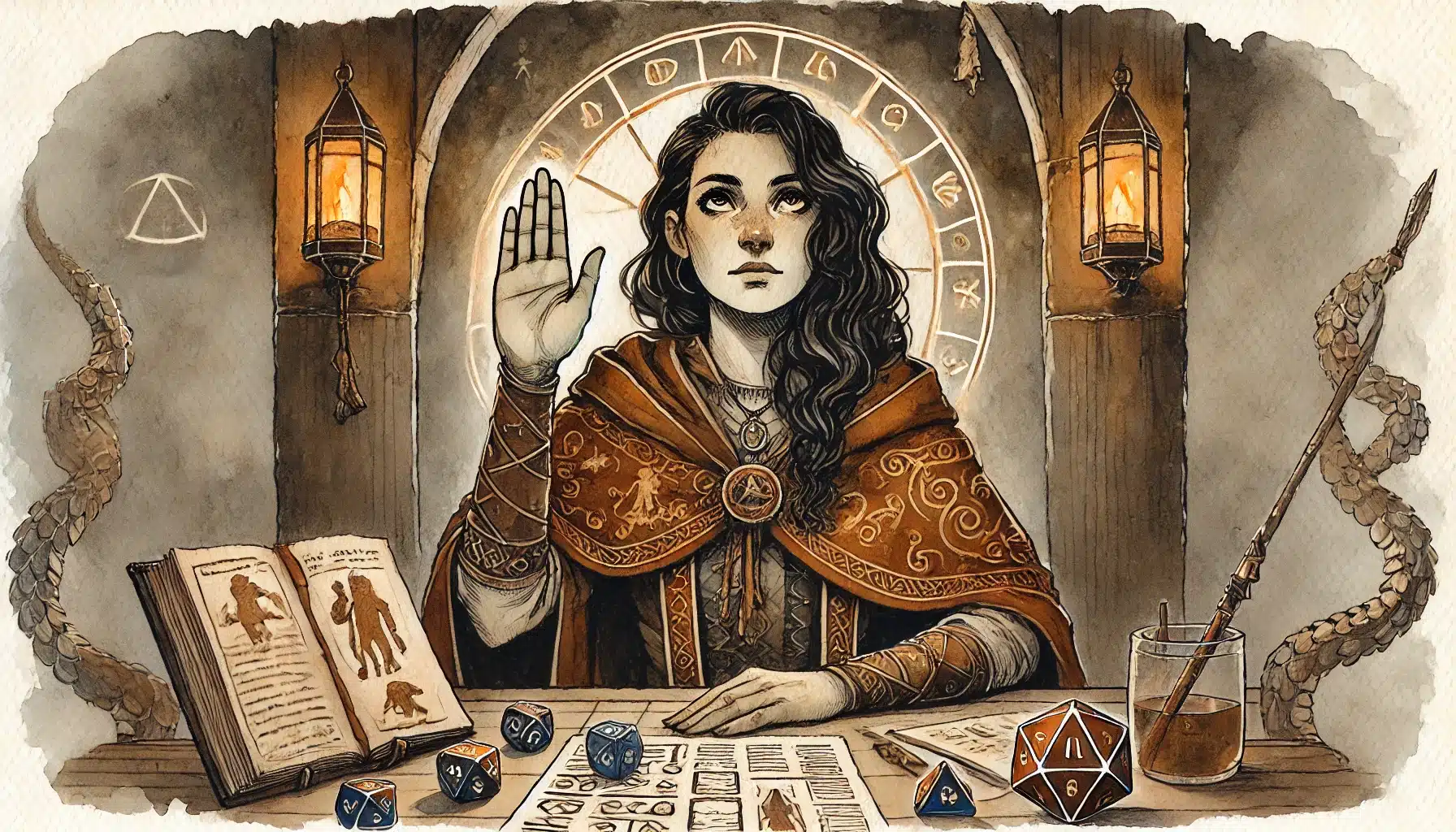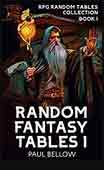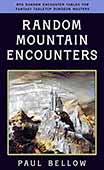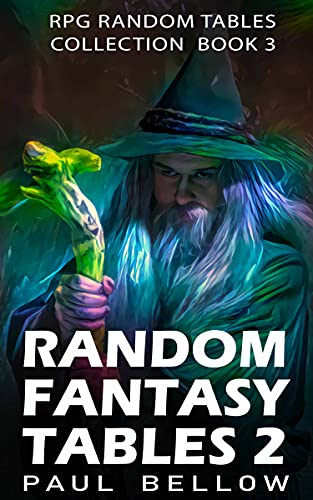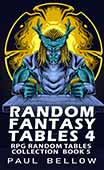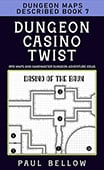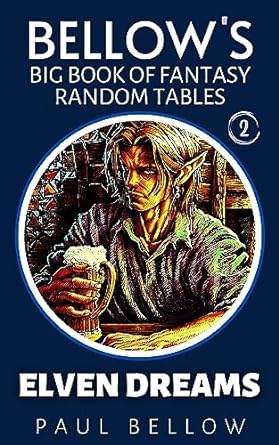To the outside world, the Dungeon Master is a stage magician: orchestrating plots, conjuring worlds, and keeping every player both entertained and engaged. But behind the DM screen, there’s a living, breathing person—one with finite reserves of energy, creativity, and emotional bandwidth. Every session, you pour yourself into the game, spinning stories out of thin air, adjudicating rules, and guiding sometimes-chaotic player choices. It’s magic, yes, but also a marathon.
The pressure to say “yes” to every wild player idea, homebrew rule, or begged-for side quest is relentless. After all, you want people to have fun, and the golden rule is that the DM should enable as much imagination as possible. But without boundaries, this urge to please becomes a double-edged sword—cutting into your fun, your time, and, eventually, your passion for running the game.
Boundaries aren’t about shutting down creativity; they’re about making what you do sustainable and joyful. Just as a wizard needs to conserve spell slots, a DM must learn when to reserve their “yes” for what truly matters, and to wield “no” as a tool for maintaining trust and clarity. Boundaries are how you ensure that your table remains a haven, not a burden.
This article is your DM’s guide to the art of “no.” We’ll explore why it’s so hard to set limits with friends, what kinds of boundaries keep games (and DMs) healthy, and most importantly, how you can say no confidently while preserving both group harmony and everyone’s hunger for adventure.
Why DMs Struggle to Say No
On paper, “just say no” sounds easy. In practice, though, every DM knows the ache of telling a player—maybe even a treasured friend—that their idea can’t fly. Those heavy pauses, the sidelong glances, and the hope that you won’t be seen as the “fun killer.” There’s a tangled web of social and emotional expectations behind every DM ruling, and for many, the desire to make the table happy outweighs the personal need for boundaries.
Pressure comes from all angles: the implicit belief that the DM is responsible for everyone’s fun, the sometimes silent expectation that you’ll never break immersion, and the deeply human need to simply be liked. Saying no can feel like letting the group down—even when your reasons are crucial for your own well-being or for the group’s long-term cohesion.
Try my AI Tabletop RPG generators...and an extensive library of content!
Without formal structure, boundaries can get blurry fast. Most groups don’t have charters or codes of conduct, and so much of the DM’s job is improvisational. When “let’s have fun” is the sole rule, it’s no wonder even veteran storytellers hesitate to draw the line.
Common Reasons DMs Hesitate to Set Boundaries:
- Fear of disappointing or alienating players
- Worry about being seen as controlling or rigid
- Desire to be liked or needed by the group
- Pressure to always keep the game “fun” and exciting
- Fears of breaking immersion or narrative flow
- Lack of clear group expectations or rules
- Being caught off guard by requests or behavior
- Not wanting to “ruin the surprise” or mystery
- Uncertainty about how to say no skillfully
- Avoiding confrontation or awkwardness
- Belief that saying yes is always the more generous choice
- Personal discomfort with conflict or assertiveness
- Feeling responsible for player happiness above personal comfort
These feelings are valid, and nearly universal among DMs—especially those who care deeply about their group and game quality. If you’ve ever bitten your tongue, second-guessed a ruling, or gone along with something you shouldn’t, you’re not alone.
But here’s the secret: healthy boundaries aren’t just a kindness to yourself—they’re a gift to your players. When you say no, you model respect for your own limits. You keep the game sustainable, prevent quiet resentments from festering, and signal that your table is a place of mutual trust. Everyone benefits when the DM feels confident, respected, and genuinely eager for the next adventure.
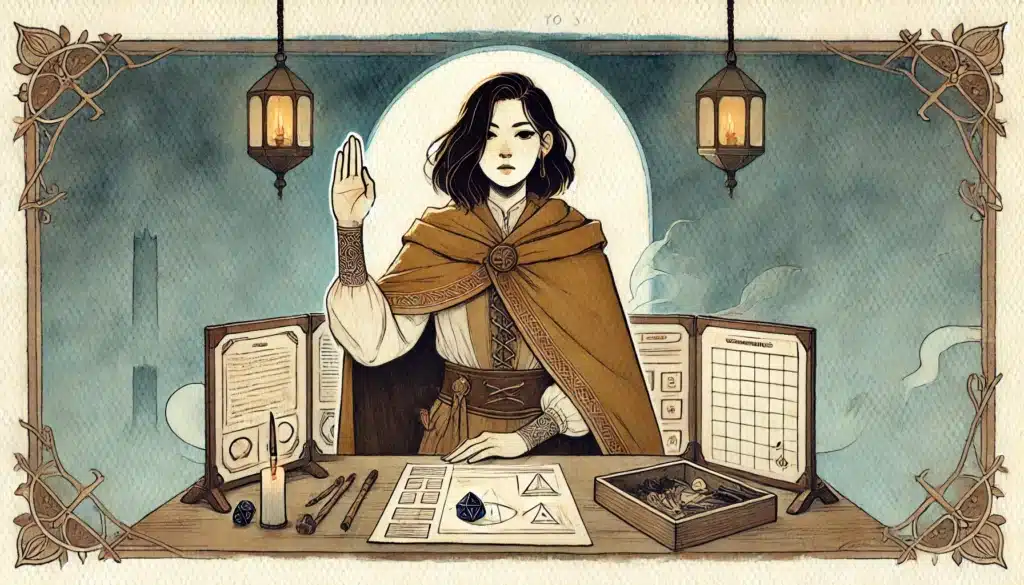
The Types of Boundaries DMs Need
Boundaries aren’t just about rules; they’re the scaffolding that holds up the entire game. Emotional boundaries keep you from burning out under the weight of everyone’s expectations. Mechanical boundaries clarify what’s possible within your game’s system. Creative boundaries establish the flavor and coherence of your story world. Logistical boundaries protect your time and off-table well-being.
⚔️ Fantasy RPG Random Tables Books
Make life as a Gamemaster easier…
If you play Dungeons & Dragons, Pathfinder, or other fantasy RPGs, this
RPG random tables series
is packed with encounters, NPCs, treasure, and more. Available in eBook or print—either way, you’ll have a wealth of adventure ideas at your fingertips.
It’s crucial to recognize that saying no in any of these areas isn’t about shutting down fun. Rather, it’s about ensuring you have the space to keep facilitating it session after session. That burst of energy that first inspired your campaign won’t last forever without these limits, no matter how devoted you are.
A skilled DM learns to diagnose which kind of boundary is at risk whenever their gut says “I don’t want this.” Are you feeling emotionally overloaded by a player’s behavior? Is a new homebrew class breaking your game’s mechanics? Did a player’s request just spiral your plot wildly off course three hours past your bedtime? Each scenario calls for a different kind of “no,” tailored to exactly what needs protecting.
| Boundary Type | Example Scenario | Risk of Not Setting It | Healthy Alternative Response |
|---|---|---|---|
| Emotional | Player jokes cross into uncomfortable territory | DM burnout, damaged trust | “Let’s keep humor friendly and in-bounds, please.” |
| Mechanical | Player wants to use a homebrew subclass from the internet | Imbalanced gameplay | “We’ll need to tweak that to fit our power level before using it.” |
| Creative | Party members try to split up for hours in-game | Disjointed story flow | “For pacing, let’s keep the group together whenever possible.” |
| Logistical | Group adds extra sessions last-minute | DM exhaustion | “I can’t run this week, but let’s schedule something for next time.” |
| Social | One player dominates all scenes | Disenfranchised players | “Let’s make sure everyone gets some spotlight tonight.” |
| Safety | Content triggers a player or the DM | Emotional distress | “I’m vetoing that topic—let’s keep things comfortable for all.” |
Everyone’s limits are different, and no two tables have the same needs. What matters most is becoming aware of your personal pressure points, whether that’s running late, allowing certain content, or being overwhelmed by requests. Reflect honestly, identify your patterns, and give yourself permission to fortify the boundaries you need most.
Your job isn’t to be everything for everyone. It’s to provide the best play experience you can—one where both your group and your creative spark have room to breathe. Don’t be afraid to customize your approach, and remember: limits are a sign of respect for yourself and your players alike.
Saying No to Problematic Player Behavior
Every DM encounters disruptive behavior sooner or later: the player who talks over others, the one who derails scenes with unrelated jokes, or the person who pushes boundaries in ways that make people uncomfortable. When this happens, letting it slide “for the group’s sake” often makes things worse, not better.
It’s crucial to address problematic behavior calmly, directly, and without personal attacks. Assume good intentions, but trust your instincts—if something feels off, it probably is. The earlier you intervene with a clear, confident “no,” the easier it is to get things back on track before resentment or discomfort takes root.
This doesn’t mean you have to be harsh or accusatory. Firm tone, gentle language, and a focus on the table’s well-being will get you much farther than confrontation. And remember: saying no to bad behavior isn’t about picking sides. It’s about safeguarding a welcoming, collaborative space for everyone.
Common Problematic Behaviors DMs May Need to Address:
- Spotlight hogging or dominating every scene
- Rules lawyering or constantly disputing the DM’s calls
- Derailing the plot with unrelated side conversations
- Making inappropriate or offensive jokes
- Ignoring established group or session zero agreements
- Metagaming or acting on player, not character, knowledge
- Refusing to let others roleplay or finish their scenes
- Excessive phone use or distractions at the table
- Intentionally provoking or antagonizing other players
- Cheating on rolls, stats, or resources
- Repeatedly challenging group consensus decisions
- Crossing personal lines or boundaries (e.g., graphic content, unwanted flirting)
As uncomfortable as addressing these behaviors can be, your table depends on it. A short, firm “Let’s bring it back to the game” or “How about we take a quick break to regroup?” can defuse tension and keep the session fun for everyone.
Remember: it isn’t just your comfort on the line—it’s the trust, enjoyment, and safety of your whole group. Protecting those things is the heart of your job, and well-placed boundaries are the tools you use to do it.

Saying No to Homebrew Overload
Few things delight players more than tweaking the rules or creating their own content: a new race from the Shadowfell, a sword that shoots fireballs, a backstory that accidentally turns the campaign into a multiverse epic. Homebrew is the lifeblood of many tables—but for DMs, it’s also a source of chaos, imbalance, and unexpected workload.
To keep your game safe, sensible, and fun, you need to be selective. Not every idea fits your table’s tone, balance, or narrative focus, and some requests add hours of prep or undermine the campaign’s core themes. A healthy “no” isn’t a shutdown; it’s a chance to co-create smarter, fairer alternatives.
⚔️ Fantasy RPG Random Tables Books
Make life as a Gamemaster easier…
If you play Dungeons & Dragons, Pathfinder, or other fantasy RPGs, this
RPG random tables series
is packed with encounters, NPCs, treasure, and more. Available in eBook or print—either way, you’ll have a wealth of adventure ideas at your fingertips.
Evaluating homebrew means asking if it fits mechanically, thematically, and logistically. Will it overshadow other players? Does it require endless new rules? Is it compatible with your world’s lore? If not, it’s okay to say no—or to offer a modified, more sustainable version.
Homebrew Requests a DM Might Decline or Modify:
- Overpowered subclasses or races from the internet
- Request for custom spell lists with no limits
- Magic items that break game balance (e.g., infinite healing)
- Characters with world-altering powers (e.g., teleport at level 1)
- Mechanics that clash with campaign tone (e.g., firearms in medieval fantasy)
- Complex crafting/minigames that require extra prep
- Backstories set in other universes or timelines (“I’m secretly a sci-fi robot!”)
- Multiclass builds that require custom mechanics
- New lore or geography that contradicts established setting
- Homebrew monsters that trivialize encounters
- Custom gods, pantheons, or factions not fitting the campaign
- Alternate rulesets (e.g., switching to a new system mid-campaign)
- Player-invented forms of magic with no clear precedent
Too much homebrew muddies the waters—for DMs and players alike. When you do say no, soften the blow with alternatives: “How about we tweak that ability for balance?” or “Let’s save sci-fi stuff for a future campaign.” Clear boundaries not only protect your sanity, they also focus creativity on what will make the current game shine.
The secret isn’t control, but clarity. Boundaries show your players what’s possible—and, as any artist knows, great work happens inside well-defined frames.
Saying No to Burnout
DMs are mortal. Even the most passionate game runners can hit a wall: missed prep, late-night exhaustion, or dreams of actually playing instead of running, just once. Recognizing your limits isn’t weakness; it’s wisdom born from many a session gone too long.
Burnout can sneak up on you, masquerading as a rough day, or hit like a brick after months of over-commitment. The key is to honor your signals and voice your needs before you’re running on empty. Whether it’s saying no to another bonus session, asking for prep help, or simply asking for a break, you owe it to yourself—and your players—to keep things healthy.
Clear communication is your ally here. Tell your group when you need to pause, slow down, or delegate. You’re not letting anyone down; you’re making sure your campaign has the energy and heart to last.
Signs of DM Burnout and Boundary Suggestions:
- Dreading sessions instead of looking forward to them
- Exhaustion after every game, even short ones
- Forgetting plot details, NPCs, or mechanics
- Snapping at players or losing patience easily
- Constantly behind on prep, improvising everything
- Losing excitement for the story or setting
- Neglecting other hobbies or rest
- Feeling guilty for taking time off or canceling
- Resenting new requests from players
- Hoping for sessions to end early
- Avoiding group chats or game planning
- Feeling isolated or unsupported as DM
Boundaries might mean canceling a session, reducing prep work, bringing in a co-DM, or even stepping away for a while. Be honest: it’s better to pause now and come back refreshed than to flame out and risk ending the campaign for good.
There’s no glory in martyrdom—only regret. The best campaigns last because the DM’s spark stays alive. Give yourself the care you’d extend to any exhausted hero on their last hit point.
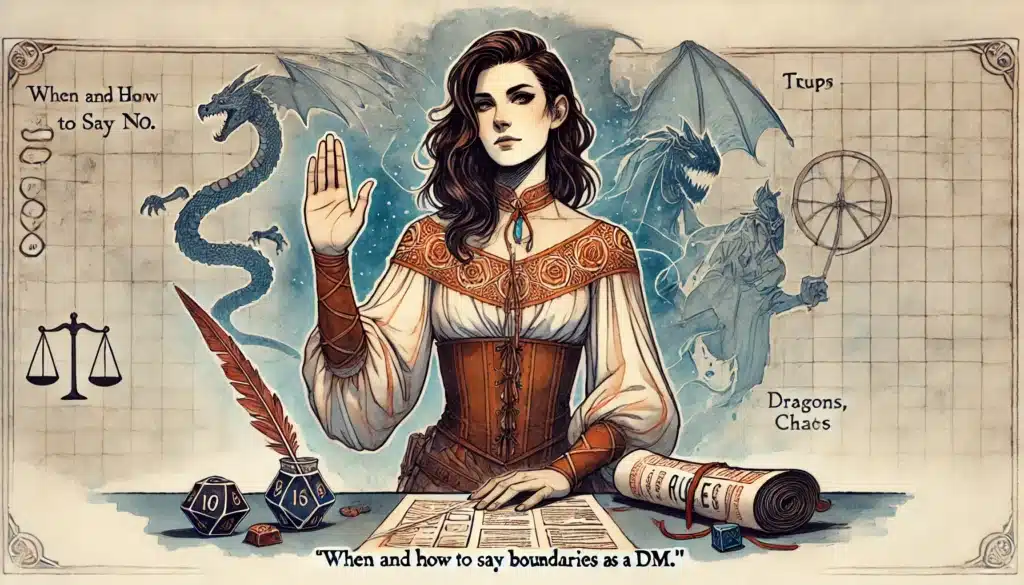
Saying No Mid-Session
Sometimes, the need to say no arises right in the heat of play. Maybe a side quest is consuming the evening, someone’s humor crosses the line, or a last-minute new ability breaks the encounter. In-the-moment boundaries are a vital DM tool: not a roadblock, but a steering wheel.
Saying no mid-session isn’t about erasing player agency. It’s about protecting pacing, table tone, and fairness. The challenge is remaining confident, decisive, and, above all, clear in your communication—so the group feels guided, not stifled.
Rehearse phrasing that’s firm but constructive. Remember, mid-session boundaries aren’t emergencies; they’re standard maintenance, keeping the adventure lively and focused.
| Situation | Example DM Wording | Desired Outcome |
|---|---|---|
| Side quest derailment | “Let’s get back to the main plot for now—lots of things in motion!” | Steer focus back to story |
| Inappropriate joke | “Let’s keep jokes table-friendly. We all want to be comfortable here.” | Diffuse tension, restore comfort |
| Rules debate drag | “Let’s make a call now and revisit after the session.” | Maintain game flow, avoid stalling |
| Player keeps interrupting | “I want to make sure everyone’s voice gets heard—let’s circle back to you.” | Share spotlight, reinforce respect |
| Unexpected broken ability | “That’s pretty wild—how about we save that power for a future level?” | Prevent chaos, balance gameplay |
| Conflict escalating | “How about we take a quick break and regroup?” | Cool off, prevent escalation |
| OOC chat taking over | “Pause the out-of-character talk for now—let’s get back into the scene.” | Restore immersion, focus group |
These interventions aren’t about rigidity; they’re acts of stewardship. A confident “no” in the moment can keep your session on track and help everyone enjoy the journey.
Remember, a DM’s firm hand at the helm is what lets players feel safe, focused, and eager for where the adventure will lead next.
How to Say No Without Killing the Vibe
Saying no is an art form, not a sledgehammer. The difference between a frustrated sigh and a warm “let’s reroute” can be as simple as your choice of words or tone. It’s often less about the content of your boundaries, and more about how you deliver them.
Use humor, gentle redirection, and the promise of future opportunities to soften the blow. Frame your boundaries not as limitations, but as invitations to collaborate creatively within the framework you’ve set. When your table sees “no” as part of the fun, it becomes a tool for excitement, not disappointment.
Most of all, listen and empathize with your players. Acknowledge their ideas and show willingness to work together, even when you have to draw limits. Boundaries work best when everyone feels respected and engaged.
Phrases and Approaches to Soften a No:
- “Let’s save that for another arc—I love the idea, but it’s not a fit just now.”
- “That’s a cool concept, but it might not mesh with this world’s tone. Can we tweak it?”
- “Love the creativity! For balance, let’s dial it back just a bit.”
- “I want to make sure everyone gets a moment—let’s rotate the spotlight.”
- “Interesting twist! I’ll think about it between sessions, okay?”
- “Let’s keep things focused for tonight and revisit later.”
- “Can we brainstorm a middle ground that works for both of us?”
- “That’s a lot to add right now. Can we build up to it gradually?”
- “Let’s check with the whole group if it fits the story vibe.”
- “How about we try a modified version first and see how it goes?”
- “I need to pause here—let’s take five and talk through it.”
- “That’s outside my comfort zone, but I’d love to find something similar that works.”
When done skillfully, boundaries actually boost group creativity—they define a playground where everyone knows the rules and feels safe to take bold risks.
Good limits don’t shrink your campaign—they create the conditions for surprises, character moments, and player-driven magic to flourish.
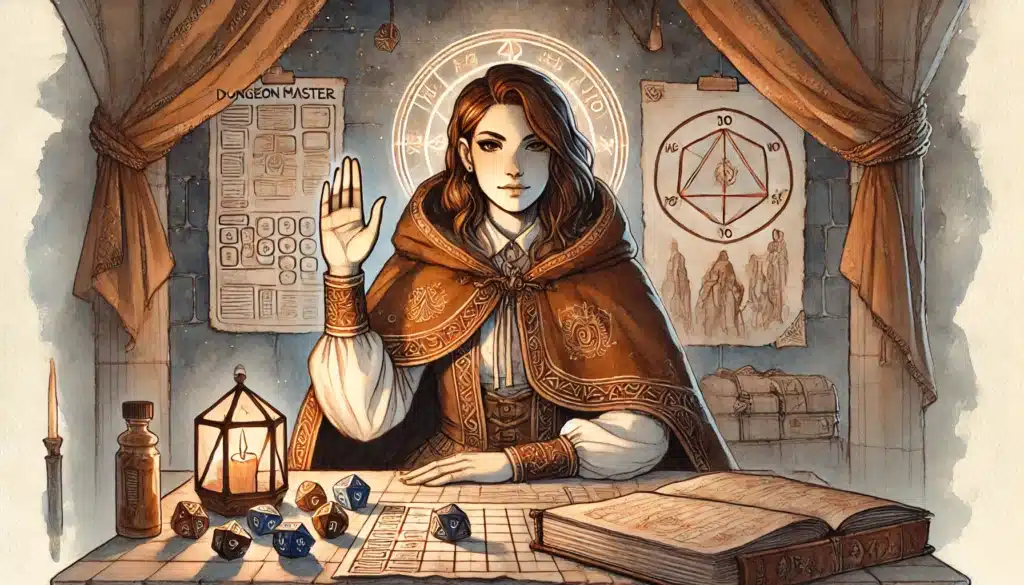
Final Thoughts on Healthy DM Boundaries
Boundaries are the unsung spellwork of a thriving campaign. Every time you say no thoughtfully, you cast protection not just on yourself, but on your players and the long-term health of your game. These moments may feel awkward at first—especially if you’re new to setting limits—but they’re what let you say yes when it matters most.
Try my AI Tabletop RPG generators...and an extensive library of content!
Reflect often on your personal boundaries: where you’re energized, where you’re stretched, and where you start to resent the demands of the table. Your needs matter, and being honest about them isn’t selfish—it’s how you make the magic last rather than burn out early.
Invite your players to join you in this spirit of open communication. Encourage honest feedback, talk about what everyone needs, and remind your group that boundaries aren’t walls—they’re the frame that keeps the story standing tall. Collaboration, after all, hinges on trust and respect for everyone’s limits.
The best campaigns aren’t those where anything goes, or where the DM says yes to every whim. They’re built on mutual understanding—a shared vision, shaped by clear expectations, open dialogue, and well-kept boundaries.
So here’s your quest: Be the DM who’s brave enough to say no, and generous enough to explain why. Build a space where everyone, including you, feels safe to dream big and play hard. When boundaries are healthy, every adventure becomes richer, deeper, and more enduring. And isn’t that exactly what every party—on both sides of the DM screen—deserves?

